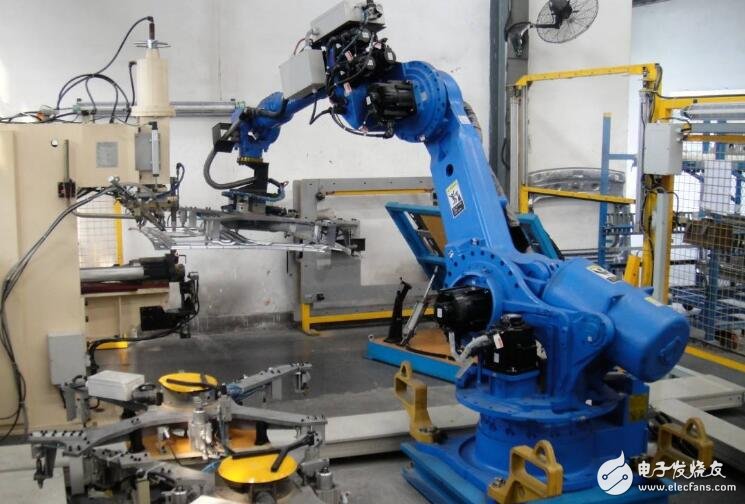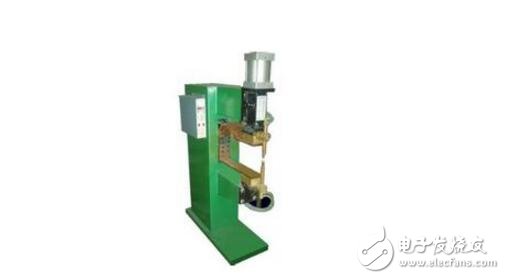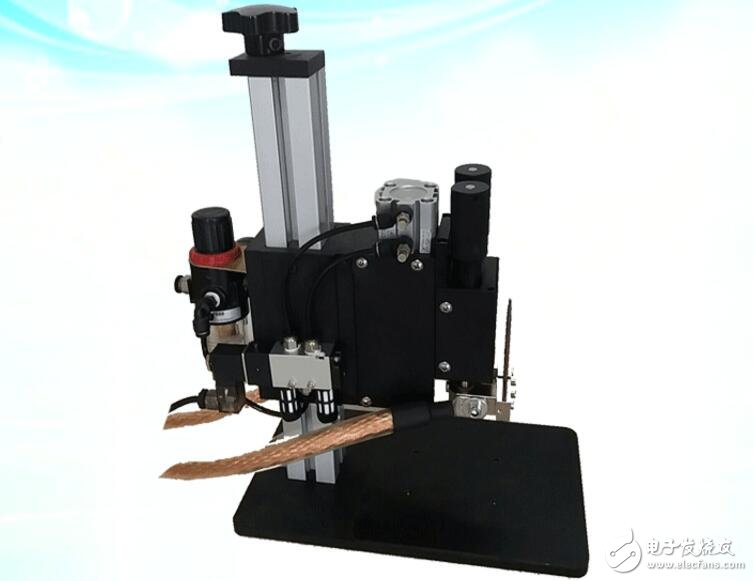Resistance welding refers to a method in which the electric resistance generated by the current through the weldment and the contact portion is used as a heat source to locally heat the desired part and simultaneously pressurize the welding. When welding, there is no need to fill the metal, the productivity is high, the deformation of the weldment is small, and automation is easy. Resistance welding is a type of welding method that uses resistance heat as an energy source, including electroslag welding with slag resistance heat as energy source and resistance welding with solid resistance heat as energy source.
Resistance welding uses a resistance heat generated by a current flowing through a contact surface of a workpiece and an adjacent region to heat it to a molten or plastic state, thereby forming a method of metal bonding. There are four main types of resistance welding methods, namely spot welding, seam welding, projection welding, and butt welding.

Resistance welding is divided into three types: spot welding, seam welding and butt welding.
(1) Spot welding: the weldment is pressed between the two columnar electrodes, and is heated by electricity to melt the weldment at the contact to form a nugget, then power off, and solidify and crystallize under pressure to form a dense joint. .
Spot welding is suitable for welding thin plates (laps) and steel bars up to 4 mm, and is widely used in the production of automobiles, airplanes, electronics, instruments and daily necessities.
(2) Seam welding: Seam welding is similar to spot welding except that a rotating disk electrode is used instead of the column electrode. The stacked workpieces are energized between the discs and fed as the disc rotates to form a continuous weld.
Seam welding is suitable for welding thin plates with a thickness of less than 3 mm. It is mainly used for the production of sealed containers and pipes.
(3) Butt welding: According to the welding process, butt welding can be divided into resistance butt welding and flash butt welding.
1) In the resistance butt welding process, the upset forging pressure (10~15 MPa) is applied first, so that the workpiece joint is in close contact, the electric heating is heated to the plastic state, and then the upsetting pressure (30-50 MPa) is applied, and the power is cut off at the same time to make the welding. The contact is plastically deformed under pressure and welded.
The resistance butt welding operation is simple, the joint shape is smooth, but the welding part end face processing and cleaning requirements are high, otherwise it will cause uneven heating of the contact surface, resulting in oxide inclusions, welding impervious and other defects, affecting the welding quality. Therefore, resistance butt welding is generally only used for welding workpieces with a diameter of less than 20 mm, a simple cross section and a small force.
2) The flash butt welding process is first energized, and then the two weldments are slightly contacted. Because the surface of the weldment is not flat, the current density of the contact point is very high, and the metal melts rapidly, vaporizes, blasts, and sparks, causing flash phenomenon. Continue to move the weldment, create a new contact point, the flash phenomenon continues to occur, when the end faces of both weldments are fully melted, quickly pressurize, then power off and continue to pressurize, so that the weldment is welded.
The quality of the flash butt welding joint is good, and the pre-weld cleaning requirements for the joint surface are not high. It is often used for welding important workpieces with large force. Flash butt welding can not only weld the same metal, but also weld dissimilar metals such as aluminum steel, aluminum copper, etc. It can weld 0.01 mm wire or 500 mm diameter pipe and 20 000 mm2 plate.

1: Resistance welding is the use of the resistance heat generated inside the weldment, from the high temperature zone to the low temperature zone, heating and melting the metal to achieve welding. It is an internally distributed source of energy.
2: The weld of electric resistance welding is solidified or aggregated under pressure. It belongs to the field of pressure welding and has the characteristics of forging.
3: Due to the concentrated heat of welding, the heating time is short, so the heat affected zone is small, and the welding deformation and stress are also small. Therefore, correction and heat treatment are usually not required after welding.
4: Welding materials such as welding, welding wire, flux, and shielding gas are usually not required, and the welding cost is low.
5: The nugget of resistance welding is always surrounded by solid metal, and the molten metal is isolated from the air. The welding and metallurgy process is relatively simple.
6: Simple operation, easy to realize mechanization and automation, and good labor conditions.
7: High productivity, can be arranged on the assembly welding line together with other processes. However, flash welding has to be isolated due to sparking.
8: Due to the high power, mechanization and high degree of automation of the resistance welding equipment, the equipment has a large investment and difficult maintenance, and the commonly used high-power single-exchange AC welding machine is not conducive to the normal operation of the power grid.
9: The point and seam welded lap joint not only increases the quality of the component, but also reduces the tensile strength and fatigue strength of the joint.
10: Resistance welding quality, there is still no reliable non-destructive testing method, which can only be checked by process samples, destructive tests, and by various monitoring techniques.

Power cord can be used in wide range of industries. Home appliances, charging equipment, lighting, Gym appliance, computer, tool, pump, compressor, medical equipment, and so on. All products which are driven by electricity need a power cord.DC (direct Current) power cord is used to the applicance with lower voltage mostly, so safety requirement is less stringent.
DC Power Cord, power cable, DC cable, power connector
ETOP WIREHARNESS LIMITED , https://www.oemwireharness.com